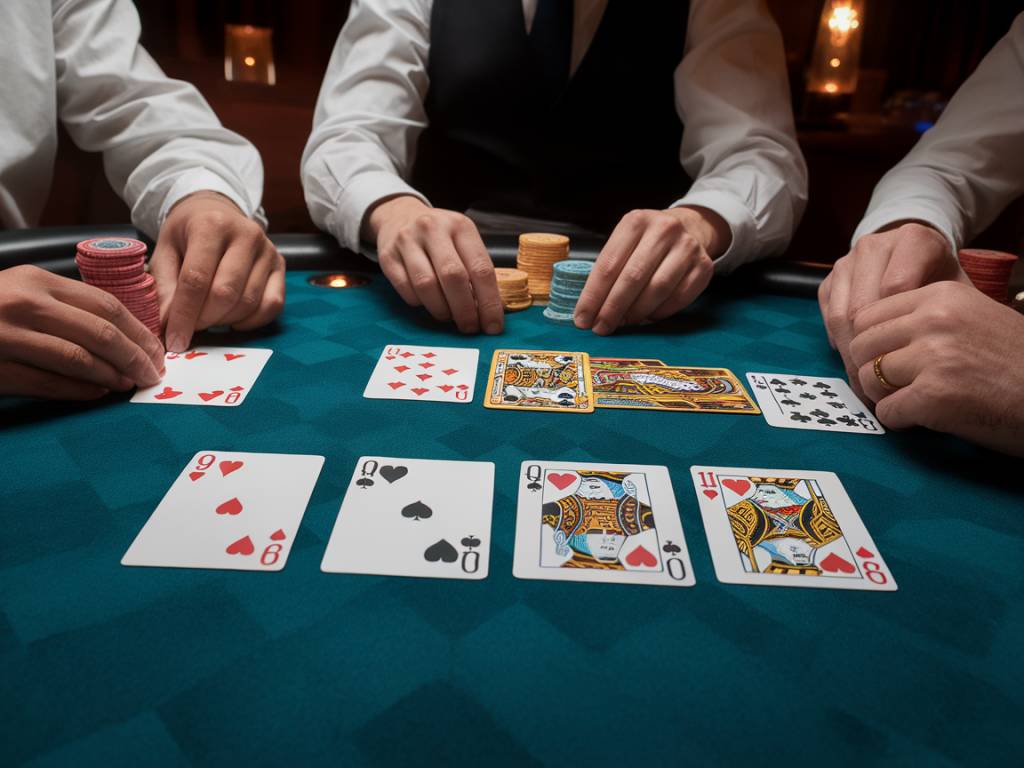When it comes to playing Texas Hold’em, knowing which hands to play and which to fold can be crucial to your success. We’ve all heard legendary stories about epic bluffs and incredible winnings, but let’s not forget that knowing *what not to play* can be just as important as knowing *what to play*. 🎲 So today, I’m going to talk about the bad cards you should avoid in Texas Hold’em and why they are less desirable. This knowledge will help you make better decisions and increase your chances of winning.
Understanding Hand Rankings
Before diving into the specifics of bad hands, it’s essential to have a good grasp of hand rankings in Texas Hold’em. The hand rankings determine the strength of your hand compared to others, and the rankings are as follows:
- Royal Flush
- Straight Flush
- Four of a Kind
- Full House
- Flush
- Straight
- Three of a Kind
- Two Pair
- One Pair
- High Card
Now that we have that covered, let’s move on to the hands you should avoid.
Low Suited Cards
One common mistake I see amongst new players is the temptation to play low suited cards like 5♣️ 6♣️ or 3♦️ 4♦️. These hands can look appealing at first because they’re suited and could potentially make a flush. However, the reality is, these hands are weak because you’re relying on a very specific set of community cards to complete your hand. The likelihood is low, and even if you do hit a flush, there’s a danger your opponent has a higher flush. 🚨
Non-Connected Off-Suit Cards
Hands like 9♠️ 2♦️ or K♣️ 4♠️ fall into this category. These hands are weak because they have poor potential to form straights or flushes. The cards don’t work together, and they don’t provide much value except in exceedingly rare cases where you hit an unlikely flop. Essentially, you’re investing in a hand with very low equity and high risk. 😓
Low Pairs
Holding a hand like 2♦️ 2♠️ or 3♣️ 3♥️ can look somewhat okay because you have a pair, but in reality, these hands are often trouble. If the flop doesn’t give you three of a kind, you’ll likely face overcards, meaning any community card could potentially be higher than your pair. This makes it difficult to gauge where you stand in the hand, often leading you to over-invest in a losing situation. 🤷♂️
Unsuitable Face Cards
While face cards might seem strong, if they aren’t connected or suited, they often spell trouble. Hands like Q♠️ 7♦️ or J♣️ 5♠️ fall into this bucket. Yes, you have a face card, which might give you the highest pair if it hits, but there’s a high chance you’ll be outkicked if someone else has a higher kicker. This reduces the strength of your hand significantly. You should generally avoid these hands unless you’re in a late position with minimal raises ahead of you. 😬
Any Two Cards Lower Than 10
Hands like 9♦️ 7♠️ or 8♣️ 6♦️ might seem like they offer potential because they can form straights. However, these hands are generally weak because they require very specific community cards to make a strong hand. The risk far outweighs the potential reward here, and often, you’ll find yourself outflopped and outplayed. 🃏
Hands with a Gap
Another set of hands to avoid are those with a significant gap between the two cards, such as J♦️ 8♠️ or Q♣️ 9♦️. These hands are tricky because they rarely make strong straights or flushes, and you are often looking to hit very specific combinations to be profitable. A large gap reduces the chances of making a consecutive straight, yet many beginners overvalue these hands because they see a face card and think it’s a strong starting point. 🚫
Low Off-Suit Connectors
Hands like 6♠️ 5♦️ or 4♣️ 3♥️ might be tempting to play because they can form straights. However, the issues are similar to those of low suited cards. They are very hit or miss and difficult to play profitably in the long run. Most community cards will not help you, and folding these hands preflop is usually the best course of action. 🎴
Tips for Improving Your Starting Hand Selection
Knowing which hands to avoid is just one part of the equation; improving your overall starting hand selection involves taking into account your position at the table, understanding your opponents, and adapting to the game flow. Here are a few tips to help you make better decisions:
- Position: Your position at the table greatly influences what hands you can play profitably. Early position requires tighter plays, while late position allows for more flexibility.
- Opponents: Understanding your opponents’ tendencies can help you decide whether or not to enter a hand. For instance, aggressive players may cause you to fold hands that you might play against more passive opponents.
- Table Dynamics: How the table is playing (tight vs. loose, passive vs. aggressive) should influence your hand selection.
- Practice: The more you play, the better you will become at judging the strength of your starting hands in different situations.
The Importance of Folding
A great poker player knows when to fold more than when to play. Folding is not a sign of weakness; it’s a key strategy that allows you to conserve your chips for more opportune moments. 🤲 Use the information about bad hands wisely, and don’t be afraid to fold hands that are likely to put you in difficult situations.
The road to becoming a successful Texas Hold’em player is paved with disciplined choices. By avoiding these weaker hands and making smarter plays, you’ll increase your winning odds and enjoy the game even more. Remember, poker is as much about what you choose not to do as it is about what you do. 🏆
Happy playing! 🎉




